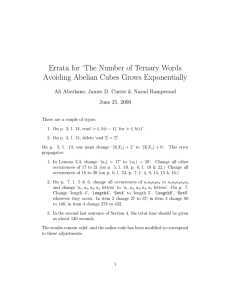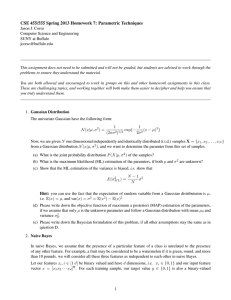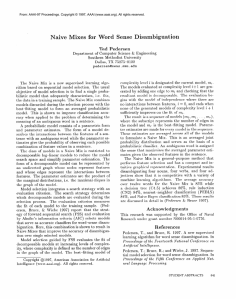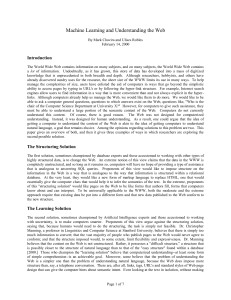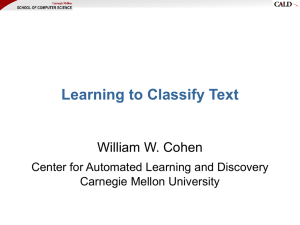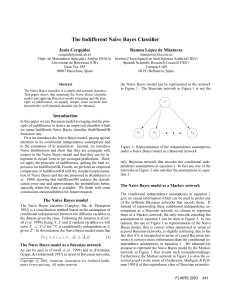Diagnosing Rain Occurrences Using Passive Microwave
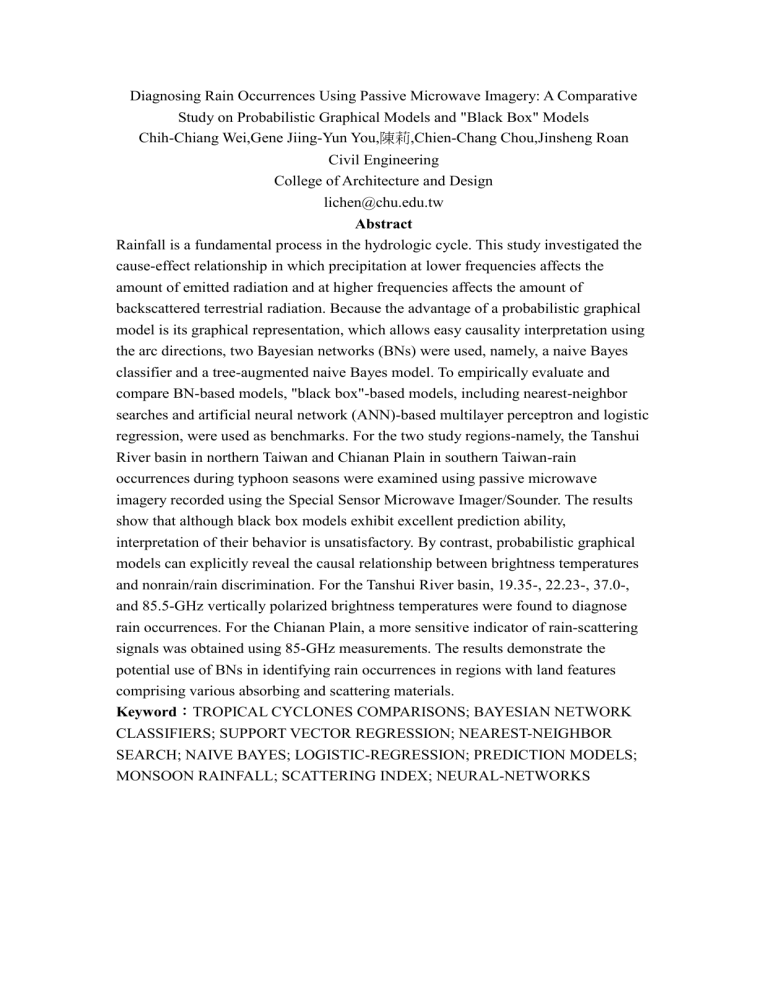
Diagnosing Rain Occurrences Using Passive Microwave Imagery: A Comparative
Study on Probabilistic Graphical Models and "Black Box" Models
Chih-Chiang Wei,Gene Jiing-Yun You, 陳莉 ,Chien-Chang Chou,Jinsheng Roan
Civil Engineering
College of Architecture and Design lichen@chu.edu.tw
Abstract
Rainfall is a fundamental process in the hydrologic cycle. This study investigated the cause-effect relationship in which precipitation at lower frequencies affects the amount of emitted radiation and at higher frequencies affects the amount of backscattered terrestrial radiation. Because the advantage of a probabilistic graphical model is its graphical representation, which allows easy causality interpretation using the arc directions, two Bayesian networks (BNs) were used, namely, a naive Bayes classifier and a tree-augmented naive Bayes model. To empirically evaluate and compare BN-based models, "black box"-based models, including nearest-neighbor searches and artificial neural network (ANN)-based multilayer perceptron and logistic regression, were used as benchmarks. For the two study regions-namely, the Tanshui
River basin in northern Taiwan and Chianan Plain in southern Taiwan-rain occurrences during typhoon seasons were examined using passive microwave imagery recorded using the Special Sensor Microwave Imager/Sounder. The results show that although black box models exhibit excellent prediction ability, interpretation of their behavior is unsatisfactory. By contrast, probabilistic graphical models can explicitly reveal the causal relationship between brightness temperatures and nonrain/rain discrimination. For the Tanshui River basin, 19.35-, 22.23-, 37.0-, and 85.5-GHz vertically polarized brightness temperatures were found to diagnose rain occurrences. For the Chianan Plain, a more sensitive indicator of rain-scattering signals was obtained using 85-GHz measurements. The results demonstrate the potential use of BNs in identifying rain occurrences in regions with land features comprising various absorbing and scattering materials.
Keyword : TROPICAL CYCLONES COMPARISONS; BAYESIAN NETWORK
CLASSIFIERS; SUPPORT VECTOR REGRESSION; NEAREST-NEIGHBOR
SEARCH; NAIVE BAYES; LOGISTIC-REGRESSION; PREDICTION MODELS;
MONSOON RAINFALL; SCATTERING INDEX; NEURAL-NETWORKS
